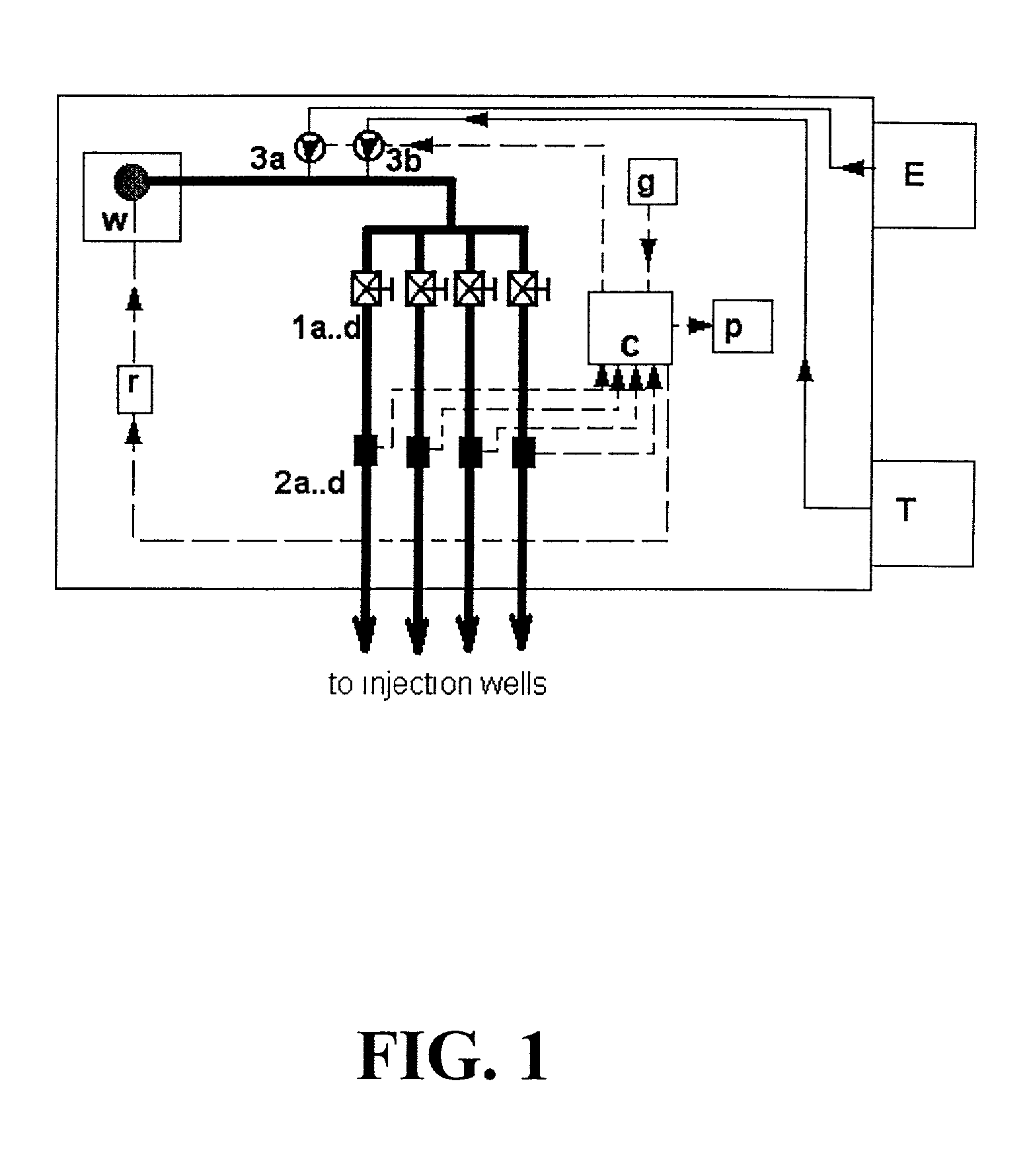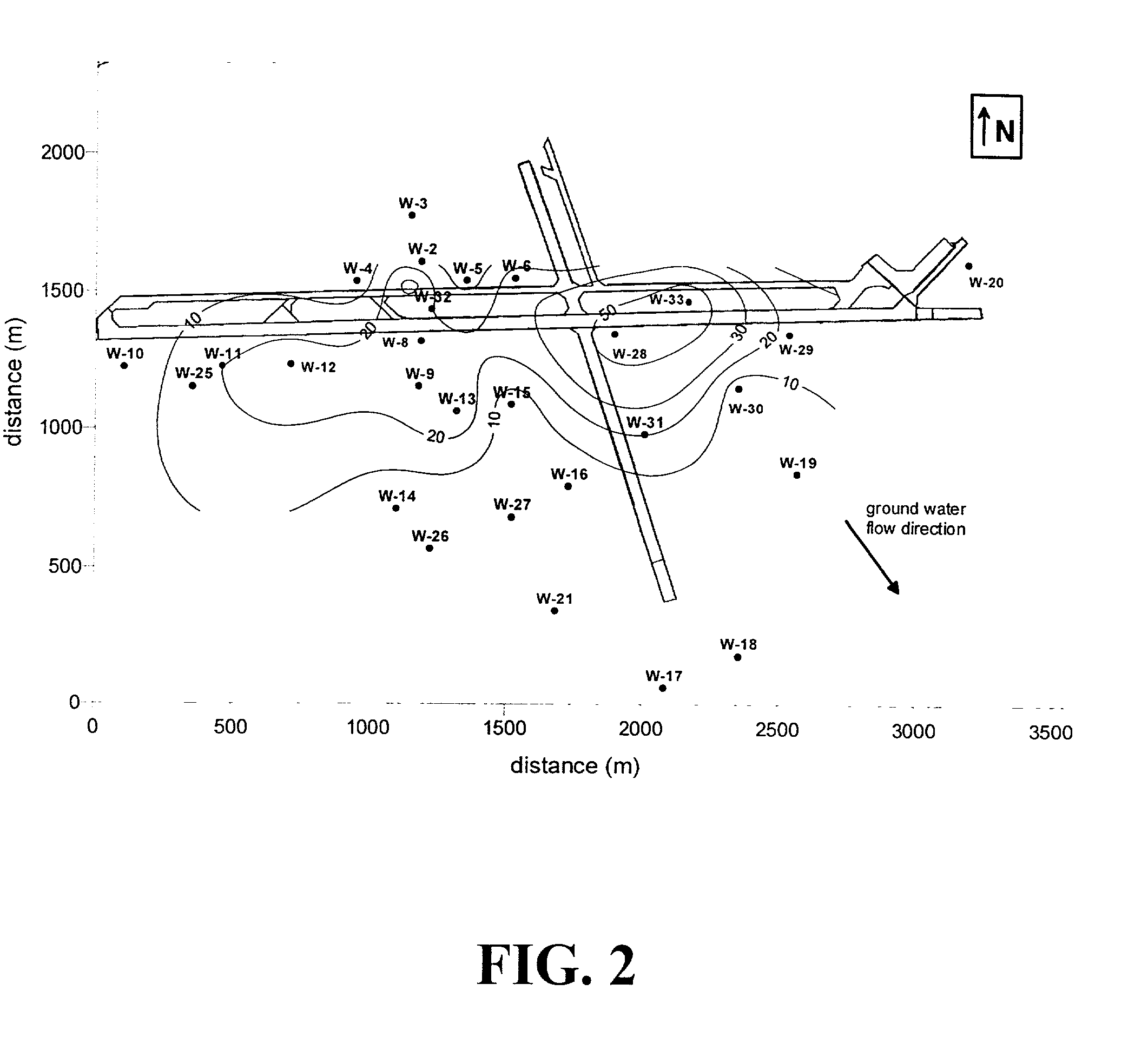Bioremediation of nitrate contaminated groundwater
a technology of bioremediation and groundwater, which is applied in the direction of biological water/sewage treatment, filtration separation, and separation processes, etc., can solve the problems of inability to provide additional airflow
- Summary
- Abstract
- Description
- Claims
- Application Information
AI Technical Summary
Problems solved by technology
Method used
Image
Examples
Embodiment Construction
[0046] Extensive biochemical characterization revealed the presence of elevated concentrations of nitrate in groundwater at Bagotville Air Force Base, Quebec, Canada. Field study suggested no evidence of denitrification due to the absence of a carbon source. This finding was confirmed by simulations of nitrate transport and biodegradation using RT3D model. Consequently, the remediation sequence described above was carried out in order to decrease the level of nitrates in ground water.
Site Hydrogeology
[0047] The soil at the site consists mostly of sand (from fine to coarse) with a small amount of clay and silt. This composition provides good permeability. The sand is located above the impermeable bed of clay which constitutes the lower limit of the aquifer. The base of the aquifer varies from 10-20 m to the north of the runways to 50-70 m south of the runways.
[0048] Groundwater is present all over the site. Rivers Mars and Gauthier constitute natural limits (sinks) of the aquifer. Th...
PUM
| Property | Measurement | Unit |
|---|---|---|
| concentration | aaaaa | aaaaa |
| concentration | aaaaa | aaaaa |
| concentration | aaaaa | aaaaa |
Abstract
Description
Claims
Application Information
 Login to View More
Login to View More - R&D
- Intellectual Property
- Life Sciences
- Materials
- Tech Scout
- Unparalleled Data Quality
- Higher Quality Content
- 60% Fewer Hallucinations
Browse by: Latest US Patents, China's latest patents, Technical Efficacy Thesaurus, Application Domain, Technology Topic, Popular Technical Reports.
© 2025 PatSnap. All rights reserved.Legal|Privacy policy|Modern Slavery Act Transparency Statement|Sitemap|About US| Contact US: help@patsnap.com



